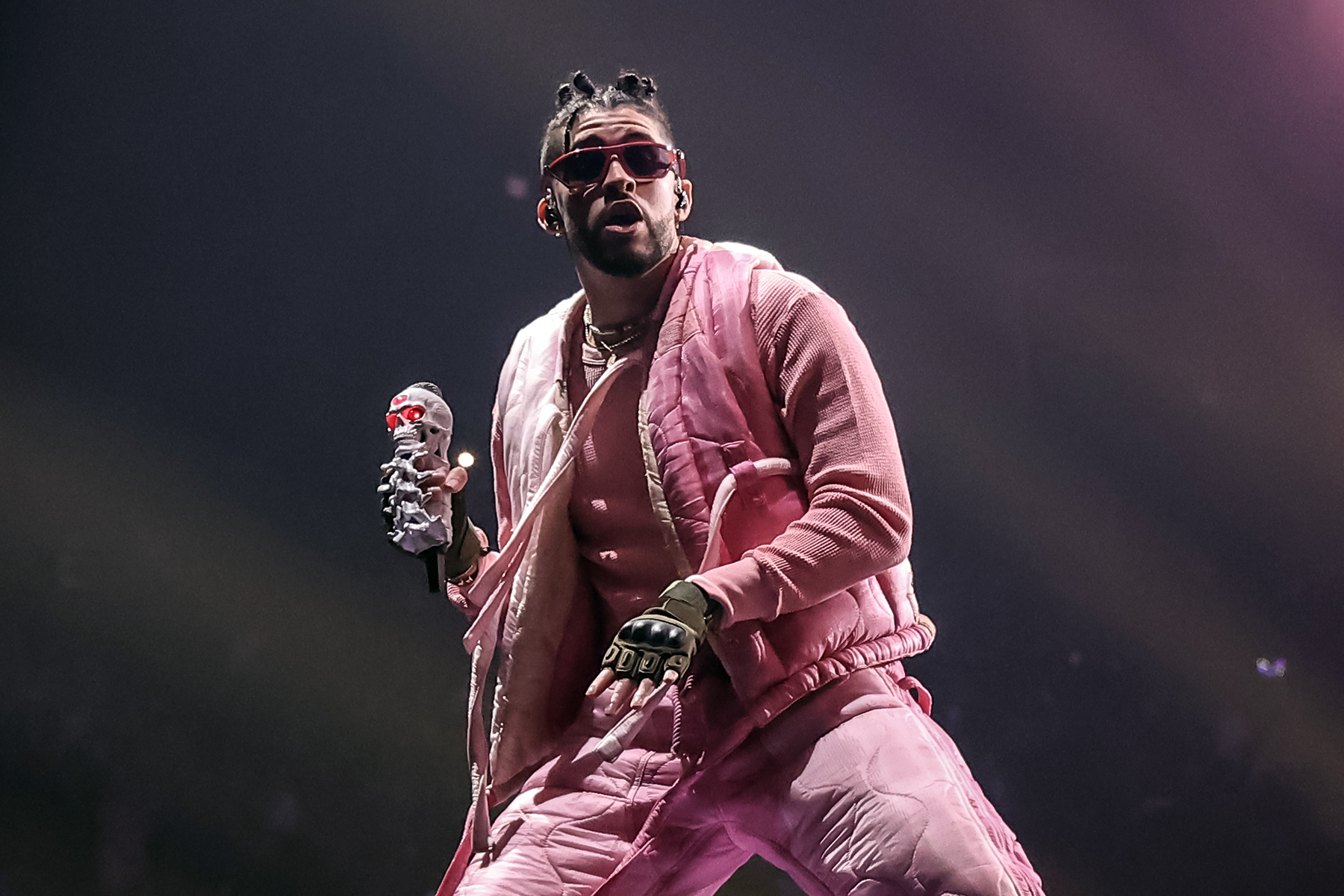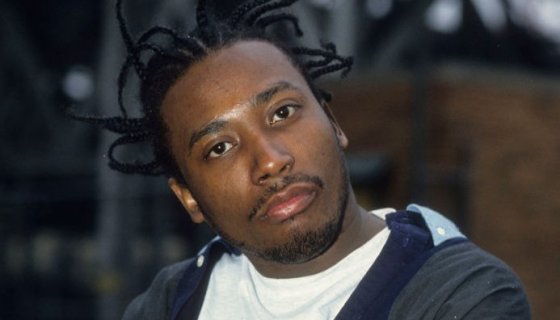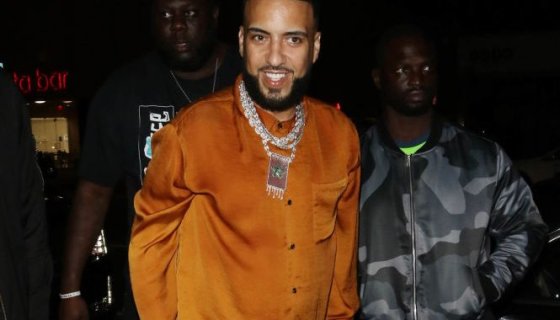
Five Things We Learned From Bad Bunny’s ‘Un Verano Sin Ti’
Elaborate album rollouts usually aren’t Bad Bunny‘s style — most of his projects have dropped into the universe in an unexpected, last-minute burst of chaos, excitement, and social media freakouts. His latest, Un Verano Sin Ti, has been a little different: The Puerto Rican singer started posting playful Instagram videos in January that extended a running gag about him leaving his girlfriend Gabriela Berlingeri with the handsome Spanish actor Mario Casa all summer so he could work on new songs. From there, he kept sharing short clips of Casa and Berlingeri hanging out together while he cranked out music on bright tropical beaches — little dispatches that hinted toward the relaxed sonic approach he was going for and reminded fans an album was coming.
He finally dropped Un Verano Sin Ti last night. It’s his longest album yet, with 23 songs, but also his most mellow and carefree. “People, we have to worry less and enjoy more because life goes too fast,” he said in one of the first Instagram videos that showed Berlingeri and Casa. The album is often as leisurely as a beach vacation, blending gentle dembow beats and twinkling production with sudden twists of mambo, house, and reggae. It’s Bad Bunny on holiday, declaring that summer has arrived. Here are five takeaways from the album so far.
He does more genre-hopping than ever — and prioritizes Caribbean sounds in particular.
If you’re Bad Bunny, genre rules are meant to be broken. Even when he released his first album, X100Pre, back in 2017, he added splashes of pop-punk and bachata to the LP’s mix of trap and reggaeton. He kept expanding his sonic universe after that: Metal guitars and vintage samples made it onto YHLQMDLG, and El Último Tour Del Mundo‘s rock edge was softened with shoegaze influences and Eighties synths. Still, Un Verano Sin Ti spans, and fully commits to, more genres than any of Bad Bunny’s previous work, probably because it’s his longest album and 23 songs gives him room to do a ton.
He bounces between mambo on “Después de la Playa,” dembow on “Tití Me Preguntó,” electro-pop on “Neverita,” and bossa nova on “Yo No Soy Celoso,” just to name a few sounds. Yet despite those eclectic influences, it’s arguably his most cohesive release thematically. The breezy ocean theme that runs through the project comes through with ambient touches, like echoes of crashing waves and yelps from seagulls, which help tie together tracks that mostly fall into a laidback, mid-tempo range.
The album’s sunny, feel-good vibe and lengthy track list help lower the stakes.
How do you lower the pressure when you’re the biggest, most streamed artist on the planet with a history of releasing chart-topping albums? You go to the beach and chill. Bad Bunny told The New York Times that he wanted Un Verano Sin Ti to be “a record to play in the summer, on the beach, as a playlist.” That vibe keeps the album from feeling like the statement-making blockbusters he’s released up until now, and though the album’s length reflects an annoying habit of overstuffed projects that have taken over reggaeton lately, it gives Bad Bunny space to play. He smartly splits the tracks into Side A and Side B and spreads out his experiments to break up repetition.
The collaborations are both super-surprising and very fitting.
Bad Bunny often enlists collaborators who reflect the sharpest OGs and the brightest newcomers in reggaeton. He does share the spotlight with some of the genre’s biggest new acts here: Rauw Alejandro joins him for the electro-tinged “Party,” while Jhayco hops on “Tarot.” Bad Bunny also throws it back to old-school heroes such as Tony Dize and Plan B’s Chencho Corleone.
But what’s most noteworthy is the surprising number of indie and experimental artists who appear in the credits. Bad Bunny has proven to be a huge music fan with an ear toward the underground in the past, and some of the album’s most exciting, well-produced moments include “Ojitos Lindos” with the Colombian electronic duo Bomba Estereo and “Andrea” with the dreamy Puerto Rican twosome Buscabulla. The dream-pop band the Marias, meanwhile, make the ethereal “Otro Atardecer” a standout.
He keeps Puerto Rico front and center and delivers direct political messages.
On every Bad Bunny album, there’s always a song that feels like a centerpiece. (“La Romana” on X100Pre, “Safaera” on YHLQMDLG, “Yo Visto Asi” on El Ultimo Tour Del Mundo.) “El Apagón” is easily the peak of Un Verano Sin Ti, especially given its surging, high-octane electronic energy — but the most arresting part is the political message embedded in the song’s lyrics.
The title of “El Apagón” refers to Puerto Rico’s power outages; the world’s second-longest blackout in history began after the island’s power grid was decimated as a result of Hurricane Maria in 2017. Recently, thousands of people lost power again when a fire broke out at one of the island’s largest power plants. “Maldita sea, otro apagón“(“Damn it, another power outage”), Bad Bunny raps on the song. He gives the outro a personal touch by including Berlingeri singing, “Lo que me pertenece a mí se lo quedan ellos/Que se vayan ellos/Esta es mi playa, este es mi sol” (“What belongs to me they keep/Let them go away/This is my beach, this is my sun”).
The rest of the album is sprinkled with tender homages to the beauty of Puerto Rico: “Puerto Rico se ve lindo hasta en Google Maps” (“Puerto Rico looks beautiful even on Google Maps”), he says on “Me Fui de Vacaciones.” But he also raises the most dire issues on the island, including femicides and violence against women, which he tackles with Buscabulla on the poignant “Andrea.” “I felt that the chorus had to carry a lot of weight about what it means to be a woman from the Caribbean,” Buscabulla singer Raquel Berríos told the New York Times.
MAG and Tainy help Bad Bunny make his bright summer a little wistful, too.
Though the album is pretty carefree overall, Bad Bunny also gets in his feelings a lot in the lyrics, something conveyed in the album title alone (“a summer without you.”) “El amor es muy bonito/Pero siempre hay algo que lo interrumpe” (“Love is really nice, but something always interrupts it”), he broods on “Un Ratito.” “Pa’ mí que yo nací pa’ estar solo” (“To me, I was born to be alone”). The mood is deepened by atmospheric, occasionally melancholy production from Bad Bunny’s longtime collaborator Tainy; he and and MAG, who worked on El Ultimo Tour Del Mundo, do most of the heavy lifting with crystalline, futuristic soundscapes and streaks of gloomy synths. But Bad Bunny also brings in under-the-radar producers, such as the low-key hitmaker La Paciencia and the emerging wunderkind Elikai.



